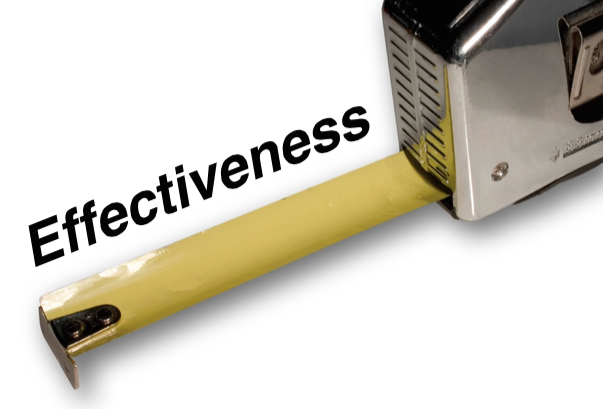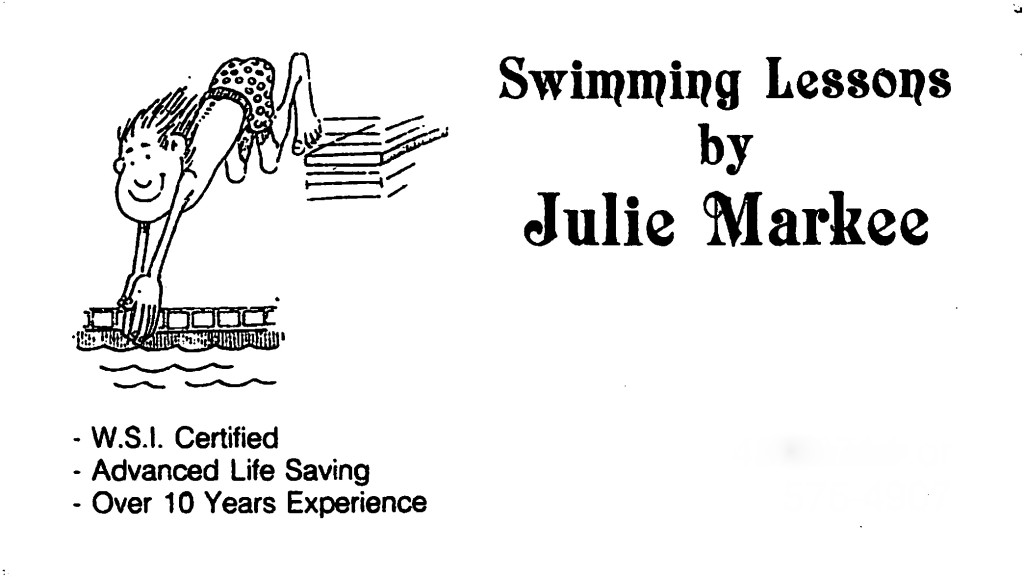
by Julie | Mar 18, 2016 | Consulting, Employee Training, Management, Onboarding
Understanding the Learning Continuum
 I don’t believe that any parent would allow a teenager to drive on a freeway without practice to develop the required skills. Learning to drive needs to be introduced in steps: first, a large parking lot, then maybe some side streets. Once that seems easy, start driving on some busier streets and then eventually head onto the freeway. Along the way, the driver exhibits understanding before progressing onto the next step. The final demonstration is a written and practical test at the local DMV.
I don’t believe that any parent would allow a teenager to drive on a freeway without practice to develop the required skills. Learning to drive needs to be introduced in steps: first, a large parking lot, then maybe some side streets. Once that seems easy, start driving on some busier streets and then eventually head onto the freeway. Along the way, the driver exhibits understanding before progressing onto the next step. The final demonstration is a written and practical test at the local DMV.
Not all operator training needs to be as structured as learning to drive. But, we can agree that it takes time to learn the skills necessary to perform a task efficiently. And before moving onto the next task, the student needs to demonstrate a certain level of competency.
A Gordon Training International employee, Noel Burch introduced the “Four Stages for Learning Any New Skill” in the 1970s. These four stages are:
Stage 1: Unconsciously Incompetent – I don’t know what I don’t know
Stage 2: Consciously Incompetent – I know what I don’t know
Stage 3: Consciously Competent – I know what to do but still need to think about it
Stage 4: Unconsciously Competent – I know what to do it and don’t need to think about it
Unfortunately, many manufacturers label operators as trained or not trained. However, being aware of these four stages can help develop a Skills Matrix for your plant and your employees. Defining Stage 1 and Stage 4 is relatively easy, but, how do you define when an operator is at Stage 2 and 3? What is your criteria for determining when an operator moves from Stage 1 to Stage 2? How about from Stage 2 to Stage 3?
Adapting these four levels to a Skills Matrix for your employees could include the following criteria:
Stage 1: Minimal Understanding – must have constant supervision
Stage 2: Some Understanding – can work independently but supervisor must check work periodically
Stage 3: Fully Trained – can work independently
Stage 4: Trainer – able to train others how to do the task
Utilizing these 4 stages within your Skills Matrix can highlight areas and operators within your organization which would benefit from additional training. It can also be used as a tool during employee reviews.
As you look at your operator training program, where do you fall on the continuum? If you aren’t at level 4, what do you need to do in order to get there?
For more practical tips for manufacturing professionals to attract, train and retain your hourly workforce, go to www.keyprocessinnovations.com.

by Julie | Mar 10, 2016 | Consulting, Employee Training, Management, Onboarding
A number of years ago when I was a “wee little chick”, I was called into a room full of managers and told that I had been selected to attend a training. I wasn’t given any of the reasons behind the training, the goals for attending the training or the duration of the training. To be honest, I don’t exactly remember my frame of mind when I heard I had been selected, but, according to the trainer, my body language clearly conveyed that I was skeptical of the training and the trainer. Over the duration of the training, I learned a great deal about myself and how to be an effective manager and to this day, I also have the pleasure of calling that trainer my mentor.
This story is a good reminder that most people are skeptical about attending training. Questions that may run through their mind include: Why am I here? Is this really important? What are the motives of the management team in selecting me for this training?
When it comes to preparing your employees, it is critical to be aware of these concerns and if possible, take steps to alleviate those concerns prior to commencing. Communication is an important part of ensuring your employees get the most out of the training. This communication can include why the training is important to the employee, why it is important to the company and what the company wants to achieve by investing in the training.
In some instances, training is a precursor to changes that are going to be instituted at the company. And the employee concerns may be around those changes and how it will impact him. Acknowledge that and provide the opportunity for the employee to share his or her concerns.
After the training, take some time to get feedback on the training, what worked well and what could be improved. Not all training needs to be as entertaining as a U2 concert but, it is important that the employee gains the necessary skills, understanding or mindset in order to have the desired impact on the organization.
There is no doubt that if my manager had a 5-minute conversation with me about the training and why they were sending me prior to the initial meeting, I would have been much more receptive to what the trainer was sharing. Yes, over time I did find value in the training, but, being prepared ahead of time would have allowed me to learn even more. As you send your employees to training, I hope you will learn from my experience and prepare your employees in order to optimize their learning.
For more practical tips for manufacturing professionals to attract, train and retain your hourly workforce, go to www.keyprocessinnovations.com.

by Julie | Mar 3, 2016 | Consulting, Employee Training, Interim Management, Onboarding

Over the past few months, I’ve been writing on a wide range of topics around how to attract, train and retain your hourly workforce. But, perhaps I should share why I find this topic so important.
First, it starts with safety. Nothing is more important than the health and safety of an employee. And, ensuring an employee is properly trained is a critical step in preventing workplace accidents.
Beyond that, here are some additional reasons why investing in training your employees is so important.
- The cost of replacing manufacturing employees ranges from 16 to 20% of their annual salary. That might not seem like a lot, but, depending on employee turnover, this cost can add up quickly.1
- Ten percent of the workforce over the age of 50 are expected to retire every year. Without a methodology to capture plant knowledge and a means to transfer it to newer employees, your business risks losing valuable information when a long-term employee retires.2
- It can take up to a year for an employee to reach peek job performance, however over 25% of employers do not have the necessary onboarding program to assist a new employee in gaining the necessary skills and knowledge during the first year.3 This results in lower job performance or higher employee turnover.
- Investing in employee training is a valuable tool for attracting and retaining employees. Employees, especially those from the Millennial generation, want opportunities to gain knowledge and learn new skills.
- Ensuring that operators are trained in multiple positions provides flexibility to the organization. This allows the plant to easily adjust to changes in work flow, varying product lines and changes to customer requirements.
- Employees who are properly trained are more familiar with the requirements of their position resulting in less scrap and increased productivity. Both of which will have a positive impact on your bottom line.
There is no doubt that having a robust operator training program will have an impact on your business. And the sooner you get started, the sooner you can help reap the benefits. If you know you need to improve your training program, but, you aren’t sure where to start, read this post titled It All Starts with One Step.
For more practical tips for manufacturing professionals to attract, train and retain your hourly workforce, go to www.keyprocessinnovations.com.
References:
1https://www.americanprogress.org/issues/labor/report/2012/11/16/44464/there-are-significant-business-costs-to-replacing-employees/
2 Pitt-Catsouphes & Matz-Costa, 2009
3http://www.tembostatus.com/blog/how-career-training-can-reduce-employee-turnover

by Julie | Feb 25, 2016 | Consulting, Efficiency, Employee Training, Interim Management, Management
A lot of people claim to have a “6th Sense” when assessing a situation. But, when it comes to making a business investment, having a benchmark and being able to quantify improvements is essential. Making process improvements in your process may require an investment in financial, personnel or temporal resources and in order to justify the investment, you may need more than a sense in order to get the necessary support. 
No matter what problem solving methodology used within your plant, most start by defining the problem. And part of this initial step includes identifying measures of process performance and establishing a baseline. An often overlooked reason for this step is to ensure the gains are sustained after improvements have been implemented.
Listed below are some metrics that can be used to measure process performance.
- First Pass Yield. This measures the number of good units produced against the total number of units produced. Depending on your process, this measurement can be broken down by department, by machine or by operator.
- Value Added vs Non-Value Added Time. Gathering data for this can be done via Value Stream Mapping or through Time Observations. From these studies, value and non-value added steps can be identified. As non-value added time is reduced, process output should increase.
- % Uptime. By defining % Uptime as outlined below, this measurement also takes into account set-up, changeovers, loading, unloading, idle time, breaks, cleaning, maintenance, etc.
% Uptime = (Value Added Time) x 100
(Operating Time)
- Process Capability, Cp or Cpk. In order for a process to be considered capable, it needs to be stable. Process stability means having consistent centering around the mean and predictable variation.
As you look towards making improvements in your process, try to pick a metric currently in use (or one that should be implemented) and use that to establish a baseline. Then utilize that metric to show areas which need improvement. Additionally after changes are made, data is available to document the improvement and provide a metric to sustain the gains.
For more practical tips for manufacturing professionals to attract, train and retain your hourly workforce, go to www.keyprocessinnovations.com.

by Julie | Feb 18, 2016 | Consulting, Employee Training, Management
Most manufacturers will admit that they don’t do a good job training their employees. It isn’t that they don’t see the value, it is rather that the task feels overwhelming and they don’t know where to start. But, like any other journey worth taking, it starts with a single step. Listed below are some steps you can take to improve your operator training program.
- Pick a Starting Point. What is the area that is causing you the biggest issue? Is there a department with high turnover? How about high scrap? Is there a bottle neck in your plant that shouldn’t be there?
- Assess the Situation. What are the tasks that need to be performed in a particular department? What are the skills needed in order to complete those tasks?
- Develop the materials. Review the established procedures against the current process and if a discrepancy is found, decide which should be included. Once that is complete, ensure the procedures are up to date. In addition to procedures, other training materials which may be of use include videos, standard work or visual aids.
- Quantify the skill levels. For each of the tasks, quantify the skill level and determine how the skill level will be measured. The skill level should range from Untrained to Fully Trained, with various levels in between. Using the defined skill levels, assess each employee against each of the tasks.
- Complete the skills matrix. Once each operator has been measured against each task, the skills matrix can be completed. And from the completed matrix, the gaps for the department have been identified and an action plan can be developed to address those gaps.
I would agree that implementing or improving an operator training system may seem daunting, but, having a process which results in fully trained operators makes the journey much easier to start.
For more practical tips for manufacturing professionals to attract, train and retain your hourly workforce, go to www.keyprocessinnovations.com.

by Julie | Feb 11, 2016 | Consulting, Employee Training, Interim Management, Management
The task of operator training is typically delegated to the department supervisor or lead. Rarely, if ever, is the supervisor or lead given the proper tools to be an effective trainer. And since the supervisor is also evaluating the operator’s performance, the feedback loop on training effectiveness may be lost. Being an effective trainer goes beyond knowing the material. It requires an ability to communicate in such a way that the trainee can learn the required information.
Listed below are some suggestions on how ways to improve the effectiveness of your training.
- Ensure the trainer has the necessary skills to conduct operator training. Check out this blog for what I consider the necessary skills to be an effective trainer. In some cases, it may be necessary to delegate training to an individual who may not be a lead/supervisor in order to ensure the training is as effective as possible.
- Periodically observe the training being conducted and provide feedback for the trainer.
- If possible, also have the trainee provide feedback on the trainer.
- Make sure there is some way to demonstrate the operator has learned the necessary information in order to do this task on his or her own. This can be through a verbal test, written quiz or a demonstration.
- Invest in some “train the trainer” training so the supervisors and/or lead can develop their skills as a trainer.
Creating an environment of learning can go a long way towards improving the performance of your plant. Increasing the skills of your trainers will help operators learn faster, be more engaged and ultimately improve the bottom line. And isn’t that the name of the game?
For more practical tips for manufacturing professionals to attract, train and retain your hourly workforce, go to www.keyprocessinnovations.com.

by Julie | Feb 4, 2016 | Consulting, Employee Training, Interim Management, Management
It is my belief and experience that operators don’t want to do a bad job. They want to do what is asked of them and do it to the best of their ability. But, we still see instances where operators aren’t following the established procedures. And when that happens, we need to understand why so steps can be taken to address the issue(s).
If you find yourself asking why your operators aren’t following procedures, here are some questions you can ask to help get to the root cause of the problem.
Were the instructions clearly defined? It may be clear in your mind how things need to be done, but, without providing detailed instructions, the task may be left up to the operator’s interpretation.
Are there visual reminders as to what needs to be done? Don’t rely on an operator to remember all the details of a particular process. Make procedures available for reference or post standard work on the floor to remind operators of the proper way to do a particular task.
Is there a better way to do it? Operators who do a particular task on a repetitive basis may have a more efficient way. Making yourself open for improved techniques will make the operators more likely to share their ideas, rather than doing it their way when you aren’t around.
Do the operators need refresher training? No matter the task, after a certain amount of time, an operator might need a little refresher training. The frequency of the refresher training could be impacted by the availability of visual reminders.
Have the operators been properly trained? There are times when the training wasn’t sufficient for the operators. If that proves to be the case, then it may be necessary to assess the effectiveness of your training and/or the trainer.
In the next blog, we will look at ways to assess the effectiveness of your trainer.
For more practical tips for manufacturing professionals to attract, train and retain your hourly workforce, go to www.keyprocessinnovations.com.

by Julie | Feb 1, 2016 | Consulting, Employee Training, Management
 When I was 8 years old, I started my own business as a swim instructor. During my 12+ years, I taught over 300 children ranging from 9 months to 18 years in my parent’s backyard pool.
When I was 8 years old, I started my own business as a swim instructor. During my 12+ years, I taught over 300 children ranging from 9 months to 18 years in my parent’s backyard pool.
Teaching children to swim felt very natural to me. I was able to adapt my teaching style to the student and I learned that an approach that worked for one student wouldn’t necessarily work for another. There is no doubt that I carried the skills I developed as an instructor into my career on “dry land.”
A number of years ago, I was asked what skills I used in order to be an effective swim instructor and I thought I’d share that list below. I believe these skills are also needed when training operators in a manufacturing environment.
- Reassuring. Remember the fear of putting your face in the water the first time? Having people relax before learning new tasks is critical in order for them to follow the material being presented.
- Adaptable. Everyone learns differently so utilizing more of the senses can improve information retention. At a minimum, training needs to utilize audio, visual and kinesthetic elements to optimize the learning process.
- Patience. Learning new information can be difficult, especially for adults. And the trainer needs to be able to go through the material numerous times with the trainee without showing any frustration.
- Ability to read nonverbal communication. When an individual is learning a new skill and struggling to master it, it isn’t uncommon for him to feign understanding to make the trainer think that he understands. However, by reading non-verbal clues the trainer can gain more insight into how well the operator is grasping the information.
- Introspection. In order to be a good trainer, she must be able to look at the training process, identify areas where improvement is needed and make the required modifications.
Mastering these skills will help maximize the effectiveness of your training. And if you are going to invest in training, don’t you want the trainee to get the maximum value out of the training?
For more practical tips for manufacturing professionals to attract, train and retain your hourly workforce, go to www.keyprocessinnovations.com.

by Julie | Jan 22, 2016 | Employee Training, Management
 As adults, we tend to cringe when we go to in-house training. It seems that we are conditioned to expect the trainer to be boring, the content to be outdated and the outcome to be marginal,at best. But, the reality is that investing in employee training is expensive and as a manager, we wouldn’t doit unless we either felt compelled or we had something of real value that we wanted our employees to learn.
As adults, we tend to cringe when we go to in-house training. It seems that we are conditioned to expect the trainer to be boring, the content to be outdated and the outcome to be marginal,at best. But, the reality is that investing in employee training is expensive and as a manager, we wouldn’t doit unless we either felt compelled or we had something of real value that we wanted our employees to learn.
Making a few simple changes to the structure of your training can improve the overall effectiveness.
- Start the training with a mental exercise. When most people walk into a meeting, they are thinking about what is happening outside of the room. The focus needs to switch to what is happening within the room. This exercise can be a brain teaser or a group activity – something short that can shift the focus to the training that is about to start.
- State the objectives of the training. This includes the overall objective(s) of the training and for each of the sections.
- Make sure the trainer knows the material. Nothing will turn off an employee faster than having someone read the material to them.
- Present the material in different ways so the employee can understand it, including visual, verbal and kinesthetic.
- Make the training relevant. For example, if you are conducting safety training, provide examples of situations within the facility that an employee might be exposed.
- Explain the why behind for the training. Using “because I said so” might work for a young child, but, when an employee understands the why, he is much more likely to internalize what is being taught.
- Set some rules, with specific penalties if they are broken. For example, one company would fine anyone $1 for coming back from a break late (including the instructors). While the penalties were collected in the spirit of fun, it definitely sent a message about the importance of being on-time.
- Get the employees involved and moving around. Group activities and team sharing can help break up the lectures while also personalizing the training.
Once the training is complete, make sure to get some input from the attendees. What did people like? What needed improvement? And if possible, tie the training back to an ROI for the business.
For more practical tips for manufacturing professionals to attract, train and retain your hourly workforce, go to www.keyprocessinnovations.com.

 I don’t believe that any parent would allow a teenager to drive on a freeway without practice to develop the required skills. Learning to drive needs to be introduced in steps: first, a large parking lot, then maybe some side streets. Once that seems easy, start driving on some busier streets and then eventually head onto the freeway. Along the way, the driver exhibits understanding before progressing onto the next step. The final demonstration is a written and practical test at the local DMV.
I don’t believe that any parent would allow a teenager to drive on a freeway without practice to develop the required skills. Learning to drive needs to be introduced in steps: first, a large parking lot, then maybe some side streets. Once that seems easy, start driving on some busier streets and then eventually head onto the freeway. Along the way, the driver exhibits understanding before progressing onto the next step. The final demonstration is a written and practical test at the local DMV.








